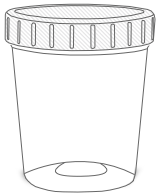
|
Day 17 Know Your Health Numbers |
You're a strong, healthy and virile young man, right? But do you have the data to back that up? There's a reason why most doctor's appointments start off with updating your vital stats like weight, height and blood pressure before they even get down to business. That's because these numbers are a good way to get a sense of how healthy you really are and to see if you're at risk for certain preventable diseases. Here are the five numbers you should be aware of when it comes to your health.
Blood Pressure
Why You Should Check It
Why You Should Check It
As your blood pressure creeps higher, you could be at risk for prehypertension or high blood pressure. Over time, excessive pressure can damage arteries and veins as well as blood-processing organs, such as your kidneys.
What You Want to See
The top number (systolic pressure) should be no more than 120 and the bottom number (diastolic pressure) should be no more than 80.
How to Check It
At least four times a year, record your blood pressure with the date in a note on your phone. You can do this with an at-home machine or simply at your local drugstore. If either number falls outside the ideal range by 10 or more points, it's time to see your doctor.
Cholesterol
Why You Should Check It
There are three numbers that make up your cholesterol—HDL (this is the "good" kind), LDL (the "bad" kind) and triglycerides. You should only really be concerned with the LDL because it collects in the walls of your blood vessels, where it can cause blockages. Higher LDL levels put you at greater risk for a heart attack from a sudden blood clot that forms there.
What You Want to See
Most doctors will want your LDL below 100 mg/dL.
How to Check It
Get a yearly blood test from your doctor.
Waist Circumference
Why You Should Check It
The measurement of your waist tells you how much belly fat you have—too much and you'll be at a higher risk of such chronic diseases as diabetes, heart disease, sleep apnea and colorectal cancer.
What You Want to See
An adult male should have a waist circumference of no more than 40 inches.
How to Check It
Every six months, take a measuring tape and put it around your natural waist (just under your belly button).
Resting Heart Rate
Why You Should Check It
For each 15 bpm bump in a man's resting heart rate, his heart disease risk rises by 24 percent, according to the American Heart Association.
What You Want to See
60 to 100 beats per minute (bpm); an athlete's can be lower.
How to Check It
Take your pulse before you get out of bed, and track it for a few months. Regular exercise can lower your resting pulse.
BMI
Why You Should Check It
The Body Mass Index (a formula using weight and height to estimate body fat) isn't a fool-proof way to see if you're overweight—it doesn't take more muscular and athletic builds into account—but it's still a good number to be aware of.
What You Want to See
A BMI of 18.5 to 24.9 for a healthy adult.
How to Check It
The Mayo Clinic offers an online calculator—just put in your weight and height and you'll see if you fall within a healthy range.


